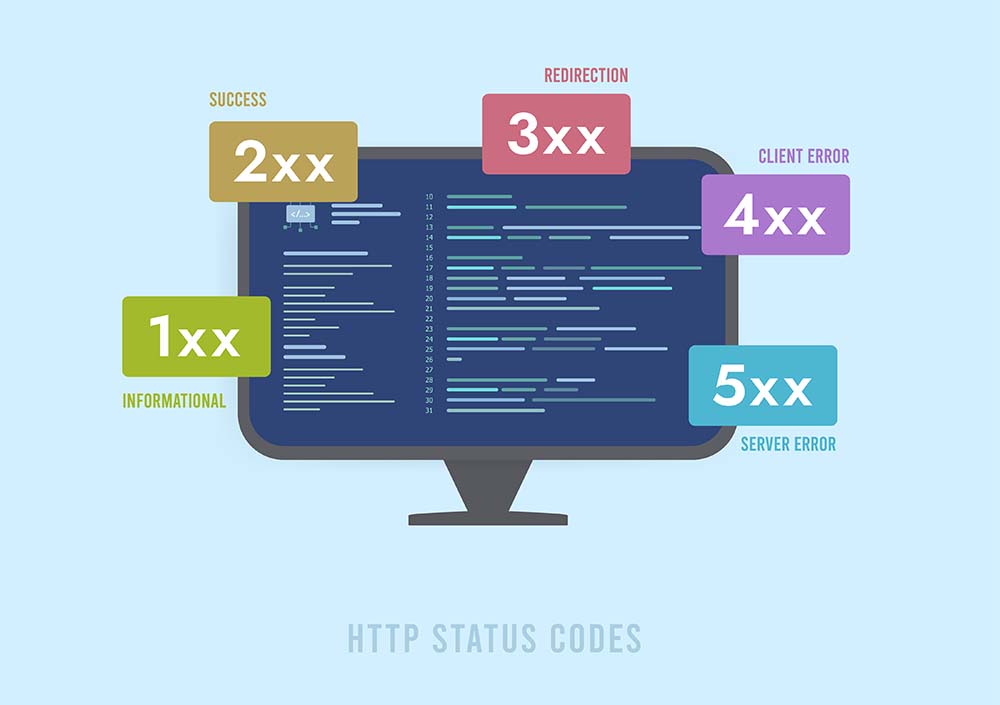Understanding HTTP status codes is essential for anyone managing a website. These small numbers your server sends back to a browser or crawler matter a lot. They affect how search engines view your site. Some codes can boost or harm your SEO, while others are just noise in the background.
This guide explains which HTTP status codes matter to search engines. It also shows which ones they ignore. Focus on the important ones to improve your rankings. We’ll bust some myths, share unique insights, and explain how to fix deeper issues when crawl reports get confusing.
If you need help managing HTTP status codes, consider partnering with the PROs at Rankwise. Our technical SEO specialists have the knowledge and experience it takes to search for these codes and ensure that the proper HTTP response is served to search engine crawlers.
Why Do HTTP Status Codes Matter for SEO?
HTTP status codes matter for SEO because they tell search engines if a page loads, has moved, or is broken. Correct codes help search engines with indexing and ranking, while errors like 404 or 500 can block crawlers and hurt visibility.
For this reason, managing them ensures search engines understand your website correctly.
When a crawler like Googlebot visits your site, your server sends an HTTP status code. This code signals the crawler to either keep indexing, try again, follow a redirect, or stop.
Think of status codes as a website’s body language. They say more than you realize:
Is this page available? If it’s available, you will typically get a 200 HTTP status code.
Was it moved? If it your web page has moved, you will either get a 301 or 302 HTTP status code.
Is it gone? You may get a 400 HTTP status code.
Should the crawler come back later?
Some of these responses shape how your site appears or doesn’t appear in search engine results.
1. 1xx Status Codes: Crawlers Ignore Them.
The 1xx range includes informational responses like 100 Continue or 103 Early Hints. These codes exist to speed up communication between browsers and servers. But search engine crawlers don’t even blink at them.
Google’s crawling systems skip 1xx responses entirely. They wait for the next meaningful code, like a 200 or 301. That means early hints might help users, but they don’t influence rankings. Don’t waste resources optimizing these for SEO.
2. Redirects: Permanent vs. Temporary Is All That Matters.
There’s plenty of confusion in the SEO world around which redirect to use: 301, 302, 307, or 308. Here’s the simplified truth: search engines mainly care whether a redirect is permanent or temporary.
Permanent (like 301 or 308): These help with canonicalization. Search engines pass most of the ranking signals to the new URL that you’re redirecting traffic to.
Temporary (like 302 or 307): These tell crawlers not to assign ranking signals to the new destination. Like the name suggests, these redirects are temporary, meaning they may be removed at some point in the near future.
Search engines process all these as redirects. The choice only matters when deciding whether the move is permanent or temporary in nature.
3. 4xx Errors: Clean Up the Mess.
Client-side errors are common. If not fixed, they can cause harm to your website, SEO, and user experience. 404s, 410s, and other 4xx status codes tell search engines that the content is no longer available. This is something you don’t want to happen.
404 Not Found: Signals a missing page. Normal in moderation, but frequent 404s can indicate a poorly maintained site. A poorly maintained website will not perform very well on the search engine results page.
410 Gone: Confirms content is permanently deleted. It’s more direct than 404, but both serve a similar SEO purpose.
These errors don’t hurt rankings on their own unless they become systemic. Still, fixing or redirecting them where appropriate ensures a cleaner crawl.
4. 5xx Errors: Server Trouble Hurts Crawlability.
Server-side errors (500–511) can block crawlers entirely. If your site throws these HTTPs responses, search engines might crawl your website less frequently or stop indexing pages that matter.
500 Internal Server Error is the most common. Fix this fast to ensure that crawlers, including Google, find and index all of your webpages.
503 Service Unavailable should only be used during temporary maintenance, along with a Retry-After header.
Consistent 5xx issues make your site look unstable to search engines, which can drag down your website’s search engine visibility.
5. 429 Too Many Requests: The Hidden Rate Limiter.
Not often talked about, but very important. 429 status codes mean your server is rate-limiting crawlers. This can happen if you’ve set crawl limits too tightly or your site is under heavy traffic.
Search engines may back off after seeing too many 429s. This means slower indexing, missed updates, and poor crawl performance. If this appears in logs or Search Console, check your server settings and crawl budgets as this may impact this discoverability of your webpages.
5. Network Errors: It’s Not Always HTTP’s Fault.
Sometimes you’ll see crawl errors in tools that mention “network errors.” These don’t always stem from your application or server. They can come from lower protocol layers.
Look into:
DNS resolution failures.
TCP/IP timeout.
TLS/SSL handshake issues.
Firewall blocking requests.
These errors are trickier to catch and may require help from your hosting provider or DevOps team, but they can stop crawlers cold.
What Do Status Codes Mean for Canonicalization?
Redirects can influence canonicalization. When Google sees a permanent redirect, it may pass authority to the new destination and treat it as the canonical version of your webpage.
However, temporary redirects can prevent this. If your goal is a consolidation of signals, always use a permanent redirect unless there’s a specific reason not to.
Also, avoid redirect chains. They dilute signals and slow down crawling of your website.
Status Codes That Don’t Exist But Confuse SEOs.
Every now and then, you’ll see status codes that shouldn’t be in play at all, like:
418 I’m a Teapot: A joke from an old April Fools’ spec. Harmless and meaningless.
600+ codes: These aren’t part of the standard. If you see them, something is misconfigured or custom-coded.
Treat odd or undefined codes as red flags. They often point to deeper misconfigurations.
How Can HTTP/3 and QUIC Change Things?
Modern protocols like HTTP/3 and QUIC aim to speed up site delivery, but they don’t change the meaning of status codes. At least not yet.
Search engines still process the final HTTP response the same way, regardless of protocol. While speed improvements can indirectly boost SEO via better user experience, don’t expect HTTP/3 to affect how status codes are interpreted.
Best Practices for Status Code Management.
You always want your webpages to return a 200 OK HTTPs response for valid content.
Use 301 redirects for permanent URL changes or canonicalization.
Don’t serve soft 404s. Returning a 200 for a missing page misleads crawlers and makes it difficult to find 404 pages on your website. Always return a hard 404 response for missing or unavialable pages.
Audit your 404s and 500s regularly using log files or crawling tools like Screaming Frog.
Keep redirects short. No more than one hop if possible.
Watch for misused 302s and correct them to 301s if the change is permanent.
Review Search Console for crawl anomalies.
How Can Rankwise Help You with Technical SEO?
Managing status codes might sound like a minor technical detail, but it can massively affect how your site is crawled, indexed, and ranked.
That’s where Rankwise SEO agency comes in.
Rankwise SEO focuses on technical SEO audits. These audits find status code issues, redirect problems, and crawl bottlenecks. If you’re facing strange 5xx errors, unsure why your redirects fail, or need to fix confusing 404s for users and bots, we can help.
Our SEO team helps you:
Run full-site HTTP response audits.
Identify status code patterns hurting crawlability.
Fix or redirect dead pages with SEO in mind.
Coordinate with developers to solve deeper server errors.
We don’t just highlight problems — we fix them. Let Rankwise ensure your status codes are sending the right signals to search engines like Google and Bing.
HTTP Response Codes Conclusion.
HTTP status codes aren’t just for developers — they’re foundational to SEO. Focus on the codes that matter. Instead of getting lost in obscure details, pay attention to the few that help search engines understand your site better.
Follow best practices. Focus on crawl stability. Don’t overthink 1xx codes or novelty status codes. Clean, efficient signaling through proper HTTP responses is one of the simplest ways to improve your SEO and keep it strong.
And if you’re overwhelmed by network errors, redirect chains, or confusing crawl reports, call in the experts at Rankwise. We will help you make sense of the mess and turn those status codes into a silent SEO advantage.



